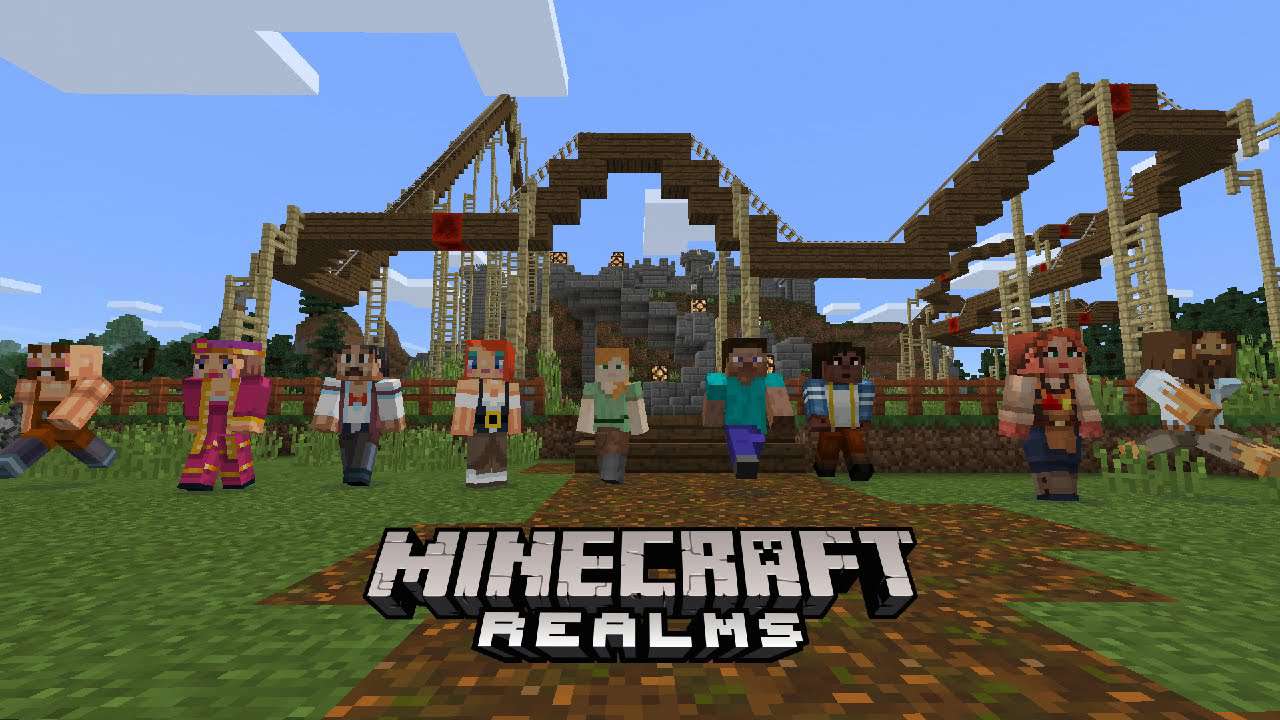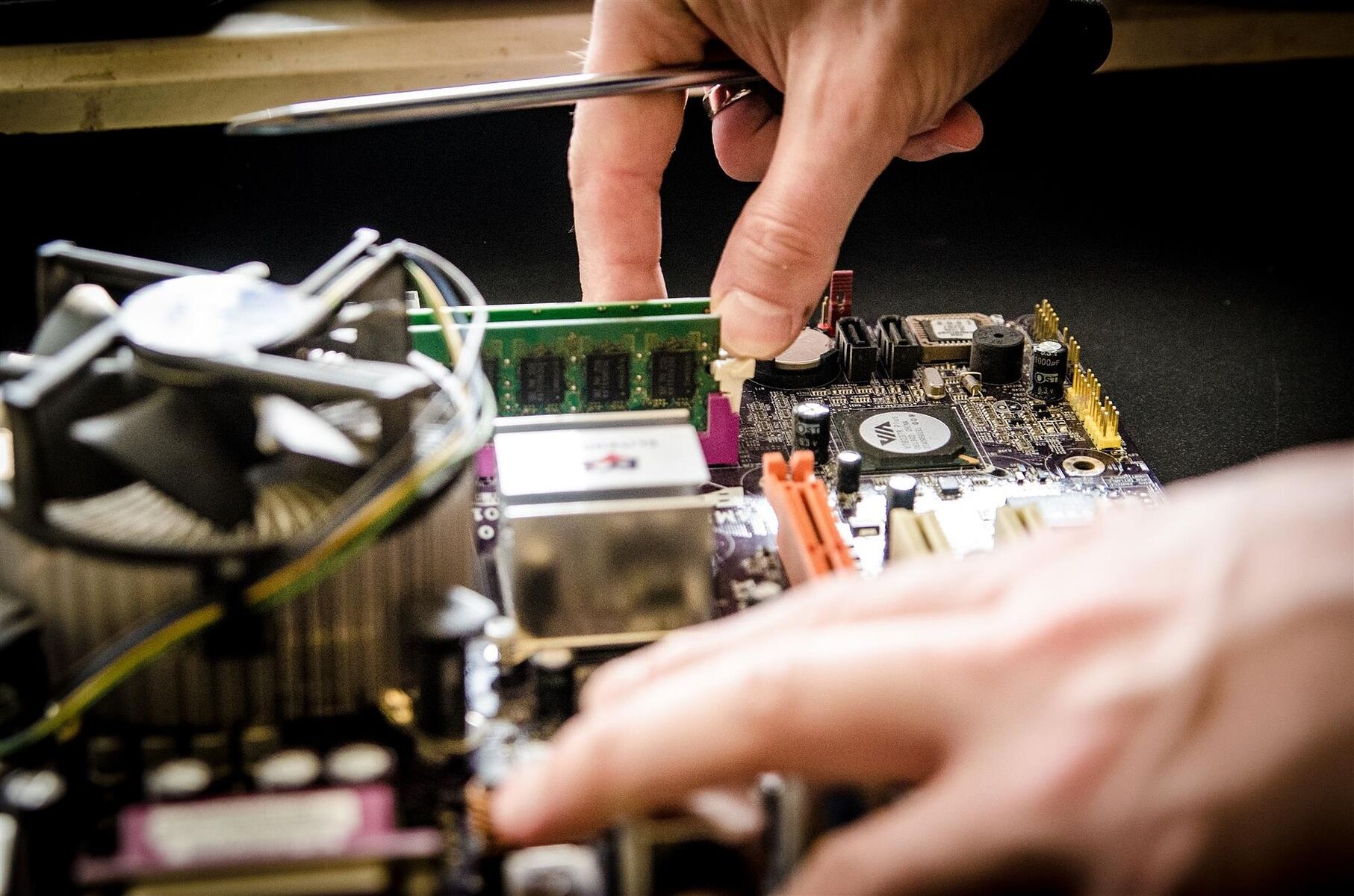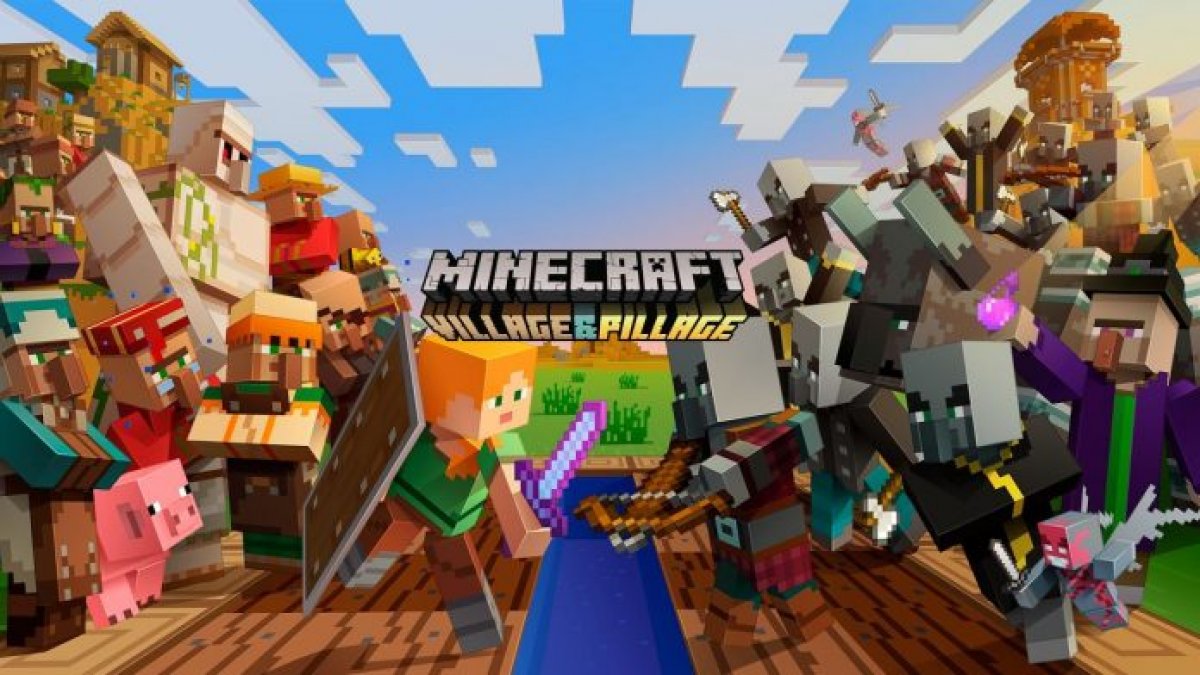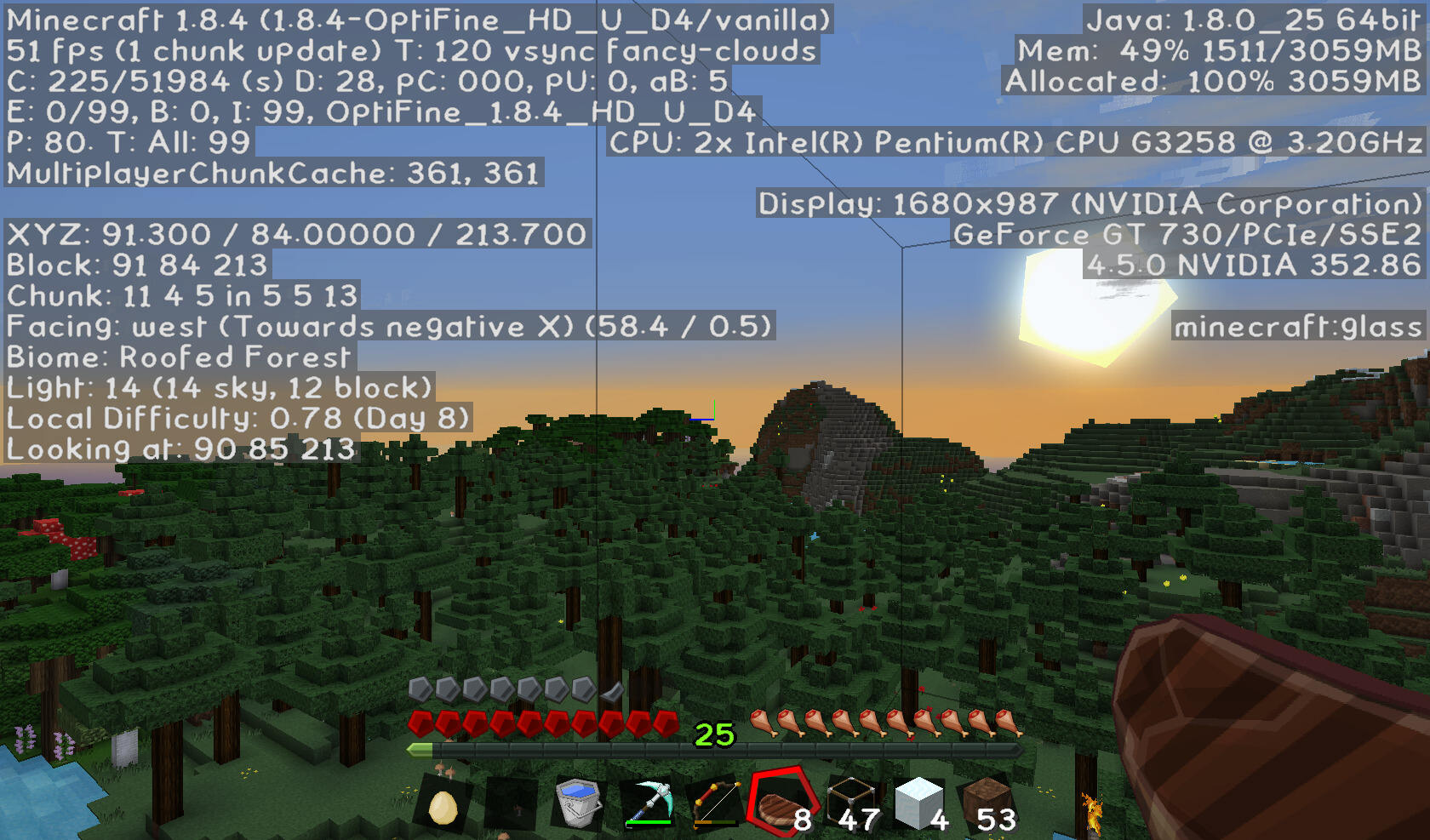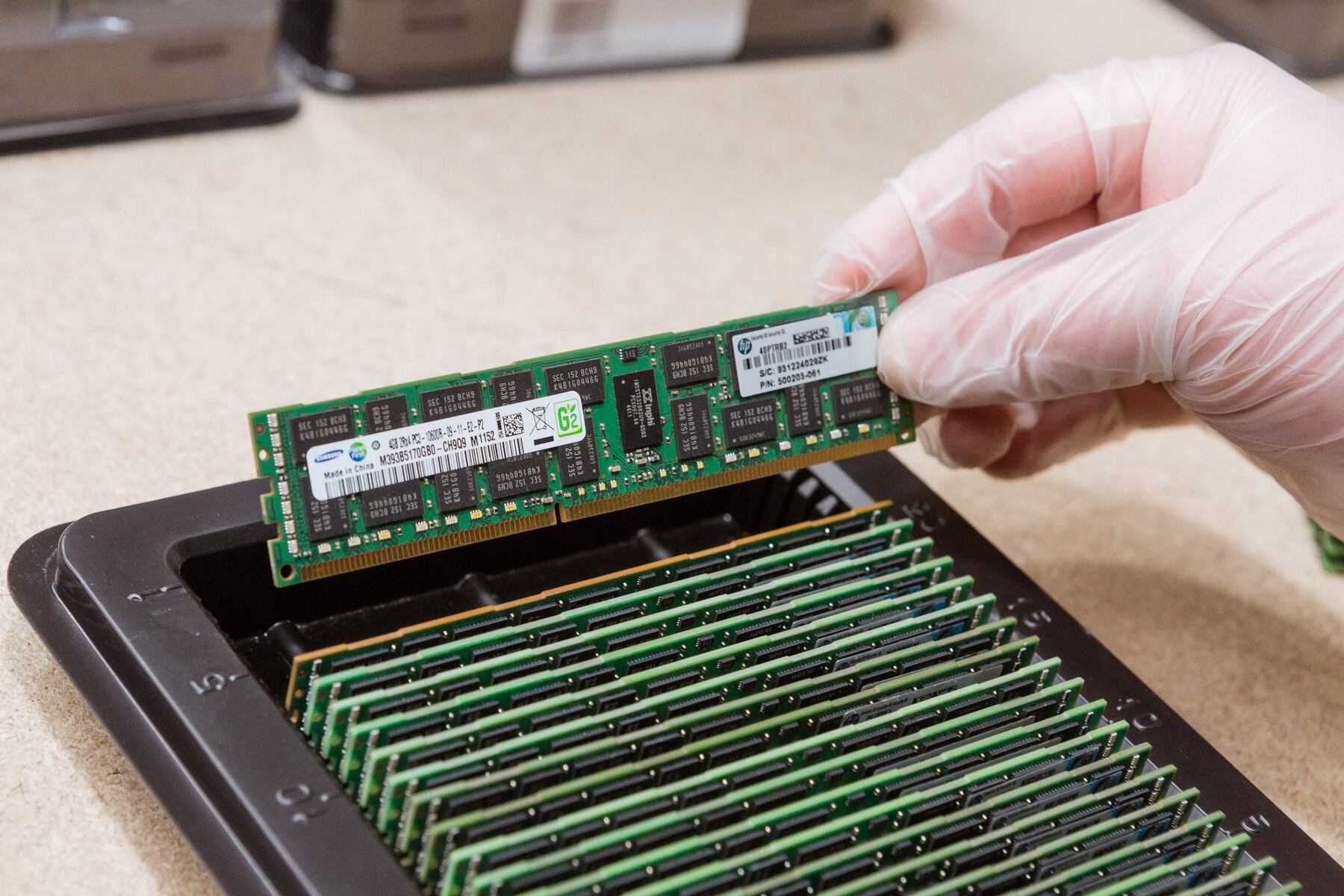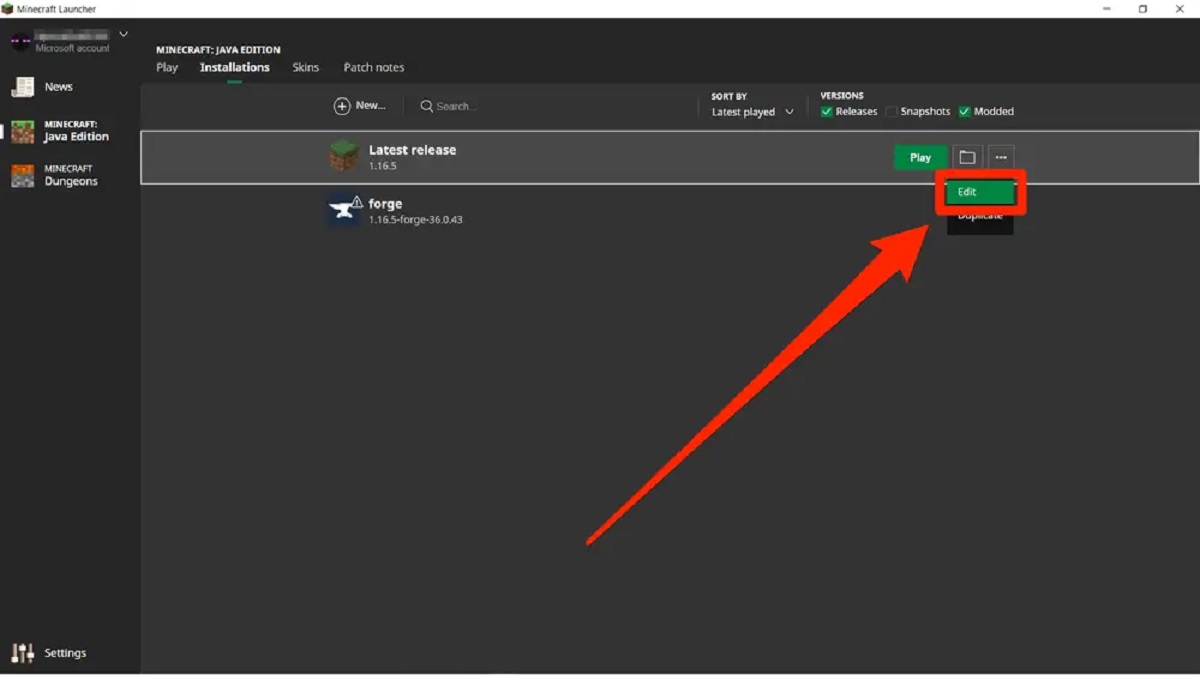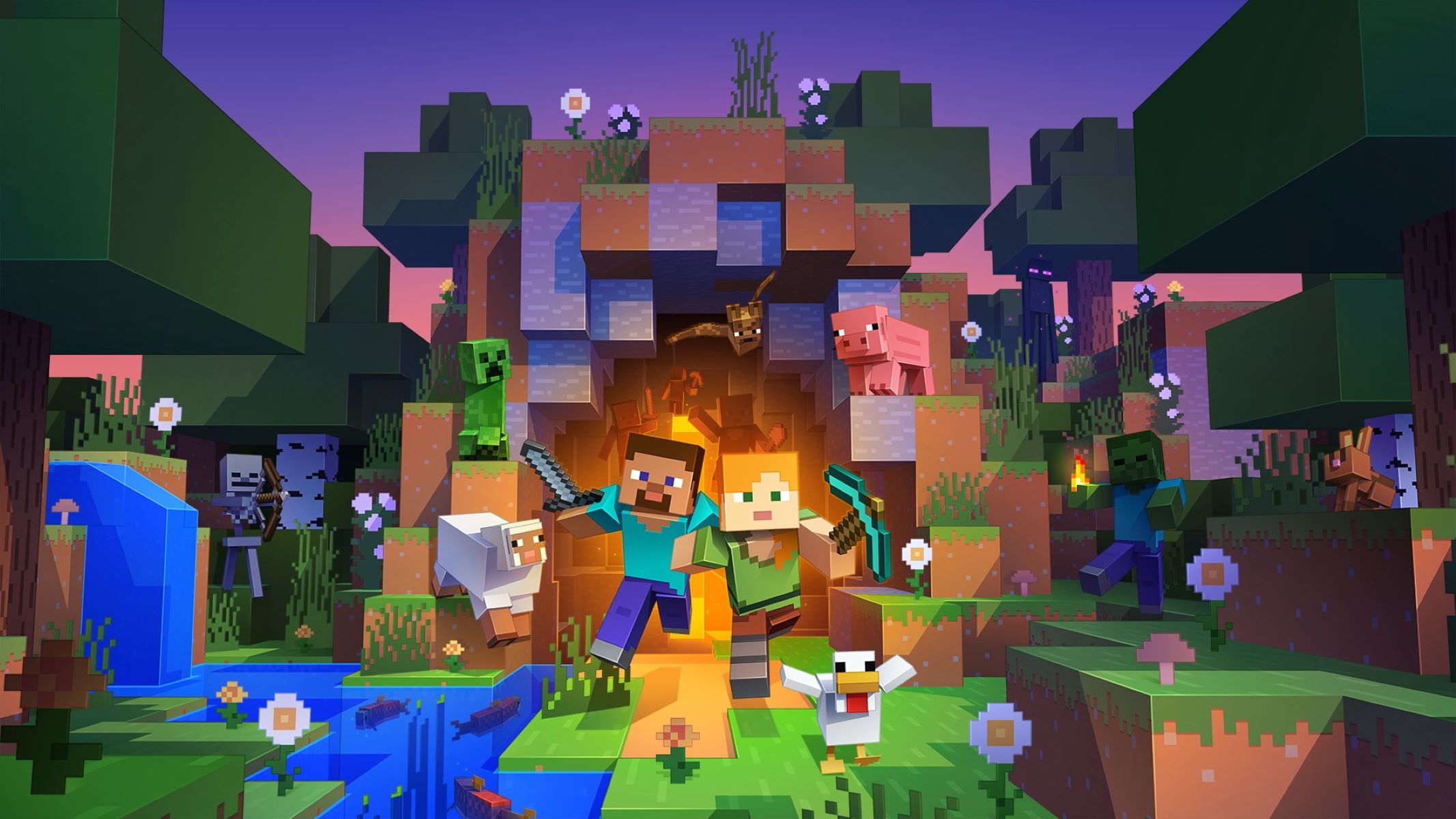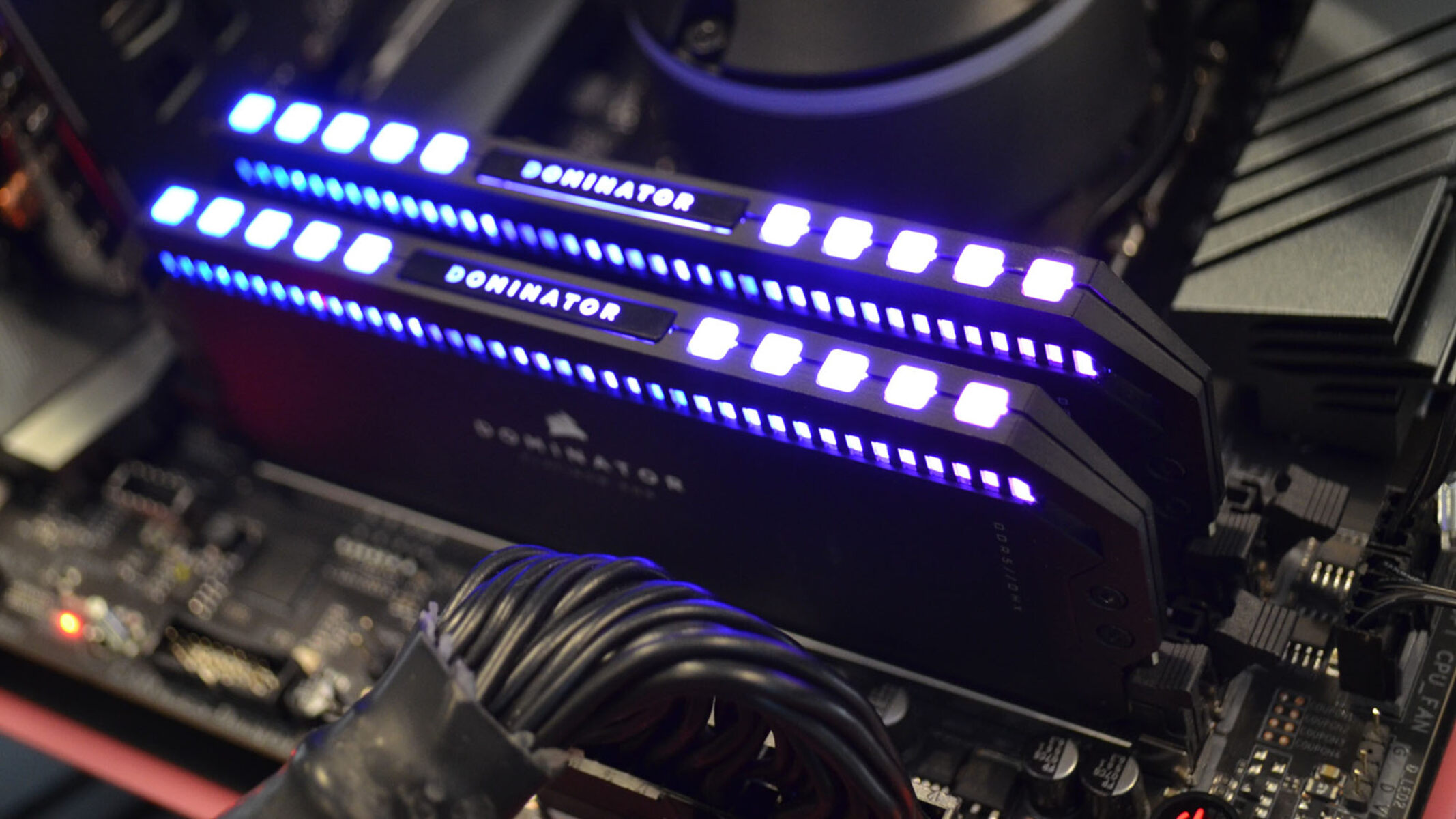Introduction
Welcome to the magical world of Minecraft! This popular sandbox game has captivated millions of players worldwide with its limitless possibilities for creativity and exploration. Whether you’re building intricate structures, embarking on epic adventures, or simply enjoying the company of friends, Minecraft offers an immersive experience like no other.
One important aspect of ensuring a smooth and enjoyable Minecraft gameplay experience is having sufficient RAM (Random Access Memory) on your server. RAM is the temporary storage space that your computer uses to run programs, including Minecraft. Having enough RAM ensures that the game can load and run smoothly without any lag or performance issues.
If you’re playing Minecraft on a private or public server, you may have heard the term “Minecraft Realms.” Minecraft Realms is a subscription-based service provided by Mojang Studios, the creators of Minecraft. It allows players to host their own servers, providing a safe and reliable platform for multiplayer gaming.
In this article, we will explore the RAM requirements for playing Minecraft and delve into the specifics of Minecraft Realms. We will discuss the default RAM allocation for Minecraft Realms, whether it is possible to increase the RAM, and the factors that can affect the performance of Minecraft Realms. Finally, we will provide recommendations for optimal RAM allocation and guide you on how to allocate more RAM to Minecraft Realms.
RAM requirements for playing Minecraft
Minecraft is a resource-intensive game that requires a certain amount of RAM to run smoothly. The RAM requirements for playing Minecraft can vary depending on several factors, such as the version of the game, the number of players, the complexity of the world, and the use of mods or resource packs.
For the Java Edition of Minecraft, the minimum RAM requirement is 2 GB, while the recommended RAM is 4 GB. However, keep in mind that these are just the minimum requirements, and if you want to enjoy a lag-free and optimal gaming experience, you may need to allocate more RAM.
The newer versions of Minecraft, such as Minecraft 1.14 and above, require more RAM due to their increased complexity and improved graphics. It is advisable to have at least 4-8 GB of RAM for these versions to ensure smooth gameplay.
For Minecraft Bedrock Edition, which includes Minecraft on consoles, mobile devices, and Windows 10, the RAM requirements are relatively lower compared to the Java Edition. Typically, 1-2 GB of RAM is sufficient to run Minecraft Bedrock Edition, although having more RAM available can still enhance the performance, especially when playing with multiple players or using add-ons.
It is important to note that allocating too much RAM can also have negative effects on performance. If you allocate an excessive amount of RAM, it may result in increased load times, stuttering, or even crashes. Therefore, finding the right balance for your specific gameplay needs is crucial.
In the next section, we will delve deeper into Minecraft Realms, a popular hosting service for Minecraft servers, and explore the default RAM allocation for Minecraft Realms.
What is Minecraft Realms?
Minecraft Realms is a subscription-based hosting service provided by Mojang Studios that allows players to create and manage their own Minecraft servers. It offers a convenient and user-friendly platform for multiplayer gaming, removing the complexities and technicalities often associated with setting up and maintaining a server.
With Minecraft Realms, players can easily invite their friends and family to join their private server and enjoy Minecraft together. It provides a secure and controlled environment for multiplayer gameplay, ensuring that only trusted individuals have access to the server.
One of the key advantages of Minecraft Realms is its simplicity. Setting up a server is as easy as selecting a subscription plan, choosing the desired server type (Java Edition or Bedrock Edition), and customizing the server settings to suit your preferences. Minecraft Realms takes care of all the server management tasks, including regular updates, backups, and security.
Another notable feature of Minecraft Realms is its cross-platform compatibility. Whether you’re playing on a PC, console, or mobile device, Minecraft Realms allows players from different platforms to join the same server, creating a truly inclusive multiplayer experience.
Furthermore, Minecraft Realms offers additional functionalities, such as the ability to upload your own custom maps, install resource packs and mods, and adjust the server settings to create a unique gameplay experience. You can also choose to make your server open to the public, allowing other players to join your world and embark on exciting adventures together.
However, it is important to note that Minecraft Realms has certain limitations compared to self-hosted servers. The available resources, including RAM, are predefined by Mojang Studios and cannot be directly modified by the server owner. This means that the performance and capabilities of Minecraft Realms may be more restricted compared to a dedicated server.
In the next section, we will explore the default RAM allocation for Minecraft Realms and whether it can be increased to enhance the server performance.
Default RAM allocation for Minecraft Realms
When it comes to Minecraft Realms, the RAM allocation is determined by Mojang Studios and is not adjustable by the server owner. The default RAM allocation for Minecraft Realms differs depending on the type of server – Java Edition or Bedrock Edition.
For Minecraft Realms using the Java Edition, the default RAM allocation is typically set at 1 GB. This amount of RAM is sufficient for small to medium-sized servers with a limited number of players and a relatively simple world. However, if you plan to have a larger number of players or use resource-intensive mods, you may experience performance issues with the default RAM allocation.
On the other hand, for Minecraft Realms using the Bedrock Edition, the RAM allocation is typically set at 2 GB. The Bedrock Edition of Minecraft has generally lower RAM requirements compared to the Java Edition, which allows for smoother gameplay even with a broader range of players and more complex worlds.
It is important to note that the default RAM allocation for Minecraft Realms is designed to provide a reasonable balance between performance and stability for the average user. However, if your server requires more resources due to larger worlds, extensive redstone contraptions, or a higher number of concurrent players, you may encounter performance issues such as lag or slow loading times.
In such cases, you might want to consider increasing the RAM allocation for your Minecraft Realms server. The increased RAM will provide more memory for the server to handle the game’s calculations, leading to smoother gameplay and improved performance. However, it is vital to ensure that your server’s resources can handle the increased RAM allocation without jeopardizing stability.
In the next section, we will discuss whether it is possible to increase the RAM allocation on Minecraft Realms and explore the factors that can affect the performance of Minecraft Realms servers.
Can you increase the RAM on Minecraft Realms?
As of now, it is not possible to directly increase the RAM allocation on Minecraft Realms. The RAM allocation for Minecraft Realms servers is set by Mojang Studios and cannot be adjusted by the server owner. This means that you have limited control over the resources allocated to your server.
The inability to increase the RAM allocation on Minecraft Realms can be a limitation for players who require additional resources to optimize performance. In situations where you have a larger number of players, complex builds, or resource-intensive mods, the default RAM allocation may not be enough to ensure smooth gameplay.
However, it is worth noting that Mojang Studios takes steps to manage resource allocations efficiently on their end. They aim to balance performance and stability for all users, taking into account factors such as server capacity and hardware limitations.
While you cannot directly increase the RAM allocation for Minecraft Realms, there are other strategies you can employ to help alleviate performance issues. For example, you can optimize your server settings, simplify complex redstone contraptions, reduce the render distance, and limit the use of resource packs or mods that require additional resources.
Additionally, regular maintenance and upkeep of your server can also contribute to better performance. This includes regular backups, deleting unnecessary files or worlds, and monitoring any potential server performance bottlenecks.
If you find that the default RAM allocation of Minecraft Realms is consistently insufficient for your needs, you may want to consider exploring other server hosting options. Self-hosted servers or dedicated server hosting providers allow for greater flexibility and control over resource allocation, including the ability to increase the allocated RAM.
In the next section, we will discuss the factors that can affect the performance of Minecraft Realms servers and offer recommendations for optimal RAM allocation.
Factors that affect Minecraft Realms performance
Several factors can impact the performance of Minecraft Realms servers, aside from the allocated RAM. Understanding these factors can help you optimize your server settings and enhance the overall gameplay experience for you and your players.
1. Number of Players: The number of players connected to your Minecraft Realms server can affect its performance. As the player count increases, the server has to handle more simultaneous actions and calculations, potentially leading to lag and decreased performance.
2. World Complexity: The size and complexity of your Minecraft world can impact the server’s performance. Large and intricate structures, extensive redstone contraptions, and densely populated areas can put a strain on the server’s resources, leading to decreased performance.
3. Resource Packs and Mods: Using resource packs or mods can enhance the visual experience and add new gameplay elements to Minecraft. However, keep in mind that some resource packs or mods may require additional resources, such as CPU power or RAM, to run smoothly. The more resource-intensive the packs or mods, the more strain it can put on the server’s performance.
4. Tick Rate: The tick rate refers to the speed at which the server processes game events. A lower tick rate can result in slower responsiveness and potentially lead to lag. While Minecraft Realms generally maintains a stable tick rate, certain conditions such as heavy server load or complex calculations can impact its performance.
5. Internet Connection: The quality and stability of your internet connection can also influence Minecraft Realms performance. A slow or unstable connection can cause lag and delay in gameplay, affecting the overall experience for you and other players on the server.
6. Server Location: The geographical location of your Minecraft Realms server can impact latency for players connecting from different regions. If your players are spread across different continents, choosing a server location that provides optimal latency for the majority of players can help improve performance.
It is important to keep these factors in mind when managing and configuring your Minecraft Realms server. Finding the right balance between gameplay features, number of players, and server resources can help ensure a smooth and enjoyable experience for everyone involved.
In the next section, we will provide recommendations for optimal RAM allocation for Minecraft Realms and guide you on how to allocate more RAM if it is available to you.
Optimal RAM allocation for Minecraft Realms
Determining the optimal RAM allocation for your Minecraft Realms server can greatly improve its performance and ensure a smooth gameplay experience. While you cannot directly adjust the RAM allocation on Minecraft Realms, understanding the factors involved can help guide your decision-making process.
For small to medium-sized Minecraft Realms servers with a limited number of players and relatively simple worlds, the default RAM allocation of 1 GB for Java Edition and 2 GB for Bedrock Edition may be sufficient. These allocations are designed to provide a reasonable balance between performance and stability for most users.
However, if you have a larger number of players, complex builds, or resource-intensive mods, it is likely that the default RAM allocation will not be enough. In such cases, adjusting the RAM allocation to a higher value can help alleviate performance issues.
While you cannot directly increase the RAM allocation on Minecraft Realms, there is a workaround that some users have found effective. By optimizing the server settings and reducing the overall resource usage, you may be able to improve performance within the allocated RAM limits.
Consider adjusting the render distance setting to a lower value. Higher render distances require more RAM and processing power, so lowering it can free up resources for other server processes. Additionally, reducing the number of entities, such as animals or mobs, in the world can also help improve performance.
It is essential to find the right balance between allocated RAM and other server settings to ensure optimal performance. Experimenting with different configurations and monitoring the server’s performance can help you identify the ideal RAM allocation for your specific Minecraft Realms server.
If you find that the performance issues persist despite optimizing the server settings, it may be worthwhile to explore other hosting options that provide more control over RAM allocation. Self-hosted servers or dedicated server hosting providers allow you to customize the RAM allocation to meet the specific requirements of your Minecraft server.
Remember, while increasing the RAM allocation can enhance performance, it is important to ensure that your server’s resources can handle the increased demand without compromising stability. Regular server maintenance, backups, and performance monitoring are vital to ensuring a smooth and enjoyable Minecraft Realms experience for you and your players.
In the next section, we will guide you on how to allocate more RAM to Minecraft Realms if you are using self-hosted servers or dedicated server hosting providers.
How to allocate more RAM to Minecraft Realms
If you are using self-hosted servers or dedicated server hosting providers, you have the flexibility to allocate more RAM to your Minecraft Realms server. This can be beneficial if you have a larger number of players or require additional resources for complex builds or mods.
To allocate more RAM to your Minecraft Realms server, you will need to access the server settings or configuration files. The exact process may vary depending on the hosting provider or server management software you are using, but the general steps are as follows:
1. Access the server configuration: Log in to your hosting provider’s control panel or server management dashboard. Locate the server settings or configuration files for your Minecraft Realms server.
2. Locate the RAM allocation setting: Look for the option that allows you to modify the allocated RAM for your Minecraft Realms server. This setting may be labeled as “RAM allocation,” “memory allocation,” or something similar.
3. Modify the RAM allocation: Increase the value of the RAM allocation to the desired amount. It is recommended to increase the RAM gradually, monitoring the server’s performance after each adjustment to ensure stability.
4. Save and restart the server: After modifying the RAM allocation, save the changes and restart your Minecraft Realms server. This will apply the new RAM allocation and allow the server to utilize the additional resources.
It is important to note that increasing the RAM allocation is just one aspect of optimizing server performance. It is also crucial to monitor the server’s overall resource usage, including CPU and disk storage, to ensure that all components can handle the increased demand.
In addition, keep in mind that allocating too much RAM can have negative effects on performance if other resources are not properly balanced. Finding the right balance between allocated RAM, CPU usage, and disk storage is key to maximizing the performance of your Minecraft Realms server.
If you are unsure about modifying the server settings or want to ensure a hassle-free experience, you can also consider consulting with a server administrator or reaching out to your hosting provider’s support team for guidance.
By allocating more RAM to your Minecraft Realms server and monitoring its performance, you can optimize its capabilities and provide a smoother and more enjoyable gaming experience for you and your players.
In the next section, we will conclude this article with a summary of the key points discussed.
Conclusion
In conclusion, RAM allocation plays a crucial role in ensuring optimal performance for your Minecraft Realms server. While you cannot directly increase the RAM allocation on Minecraft Realms, understanding the factors that affect performance and implementing appropriate optimizations can significantly enhance your gameplay experience.
We explored the RAM requirements for playing Minecraft and discussed how Minecraft Realms provides a convenient and user-friendly platform for multiplayer gaming. We also learned about the default RAM allocation for Minecraft Realms, which is determined by Mojang Studios.
Although the default RAM allocation may be sufficient for small to medium-sized servers, it might not meet the needs of larger servers or resource-intensive gameplay. We discussed strategies for optimizing server settings and ways to allocate more RAM if you are using self-hosted servers or dedicated server hosting providers.
Additionally, we identified factors that can impact Minecraft Realms performance, such as the number of players, world complexity, resource packs and mods, tick rate, internet connection, and server location. Understanding these factors will help you make informed decisions about resource allocation and server configuration.
Finding the optimal RAM allocation involves striking a balance between performance, stability, and resource usage. Regular maintenance, backups, and performance monitoring are vital to ensuring a smooth and enjoyable Minecraft Realms experience.
If the default RAM allocation of Minecraft Realms is consistently insufficient for your needs, you may want to explore other server hosting options that provide more control over resource allocation.
Remember, while RAM allocation is a key aspect, it is just one factor among many that contribute to server performance. Optimizing server settings, focusing on efficient resource usage, and considering the broader server infrastructure will help you create an optimal Minecraft Realms experience for yourself and your players.
We hope that this article has provided valuable insights into the RAM requirements for Minecraft Realms and how to optimize its performance. Enjoy your adventures in the blocky world of Minecraft!







